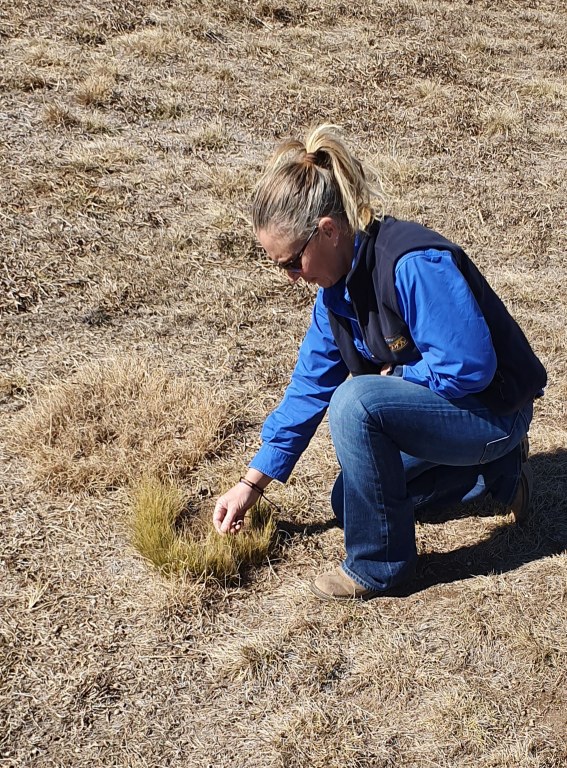
Combatting weeds when it does rain
What is going to happen when it does eventually rain?
Well, hopefully plants will begin to grow, and a green tinge will spread across the landscape. To assist farmers and locals in identifying these first plants, GLENRAC is hosting its monthly ‘Smoko’ event in Deepwater. The ‘Smoko with Friends’ is on the 8th August from 10:30am-12:30pm at the Longhorn Bar & Grill. Morning tea and lunch will be provided.
But what are those first plants going to be? By the laws of succession, the first plants to pop up will be sprawling, drought hardy plants, that are designed to stabilize the soil surface for higher succession plants like grasses, shrubs and trees.
These plants are mostly known as weeds. One weed that loves to invade bare soil and overgrazed pastures is Serrated Tussock (Nassella trichotoma). This weed is difficult to identify just upon looking, as it has a similar appearance to some native grasses like Poa Tussock (Poa labillardierei).
Representatives of the New England Weeds Authority, Josh Biddle and Trent McIntyre, will bring along some specimens to teach landholders and towns people how to correctly identify Serrated Tussock. Poa plants will also be available to show how to distinguish the two.
Josh says “Serrated Tussock has a very light seed head and spreads via wind. So, it can easily spread kilometers at a time. The current climate and feed availability has developed perfect conditions for Serrated Tussock to emerge.
The issue is that it can be hard to identify, so we all need to be proactive in monitoring our paddocks to check tussocky plants.” Among the casual discussion will include how to prevent emergence and how to eradicate developing populations of Serrated Tussock.
Along with the NEWA, LLS District Vet will be available to answer livestock and nutrition questions. Stuart Brummel from the Rural Financial Counselling Service will give an update on funding and assistance available to farmers.
Serrated Tussock has no grazing value. Infestations result in significant loss in livestock production. In NSW it is estimated that the weed has cost more than $40 million in lost productivity.
Serrated Tussock is best controlled by prevention. Keeping 100% ground cover and good pasture competition. It most readily invades disturbed soil, so tilling is not an effective control method.
Serrated Tussock is most easily identified by its serrated needle like leaves. While native grasses form a V or U shape leaf you can feel the edges, Serrated Tussock has a more cylindrical shape that rolls like a needle between the fingers. The fine sharp serrations can also be felt when fingers are run down the length of the leaf.




